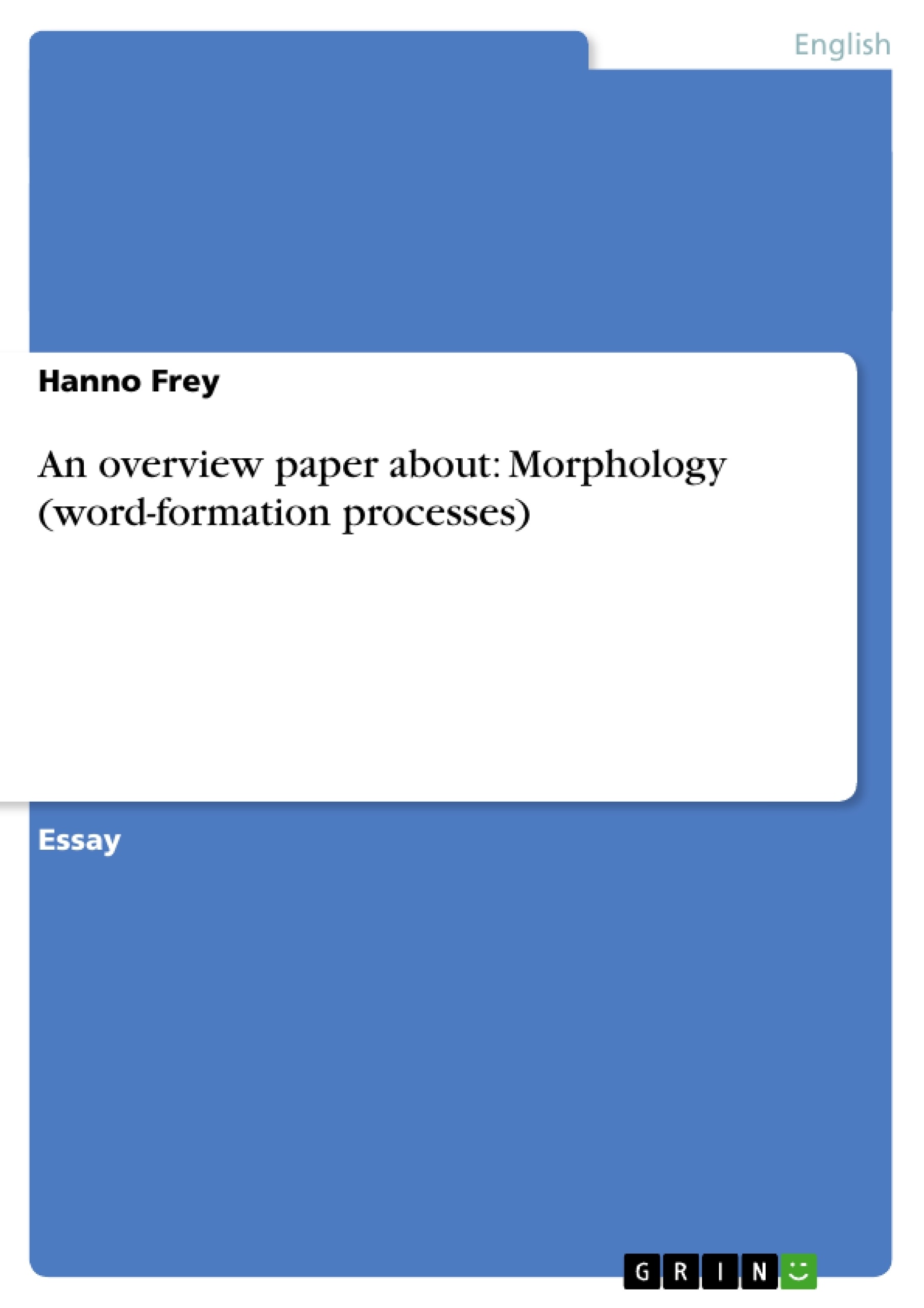This paper deals with a fundamental branch of linguistic research. The term fundamental is justified insofar as the ability to analyse a continuous string of sounds into discrete units constitutes a central part of language comprehension. The analysis of morphological structures is situated right at the basic level of a language because it reveals deeper insight into how the smallest meaningful parts of a language are organized. A morphological description includes information about the internal structure of words, the rules that govern these structures and the relationship among words. Furthermore, the linguists′ interest in morphology is not just concerned with a mere description of that what already exists – it is also aimed to show in how far a language may be viewed as potentially creative with regard to the invention of new words on the basis of a given set of rules. This process is traditionally referred to as productivity and equated with “linguistic creativity” or “creativity in language”. The corresponding field of linguistic reserach deals with the study of words which goes beyond the limitations of dictionary entries. In this context words, phrases and texts must be seen as larger, complex or non-primitive units that are built up from morphemes in successive stages.
Inhaltsverzeichnis (Table of Contents)
- INTRODUCTION.
- LANGUAGE STRUCTURE
- Signs (Saussure).
- MORPHOLOGY..
- LEXICAL MORPHOLOGY
- Derivation....
- Word-Coinage
- Compounds and Phrases...
- Conversion (zero-derivation).
- Blends (portmanteau words).
- Acronyms.....
- Back-formation......
- Clippings (abbreviations)......
- INFLECTIONAL (GRAMMATICAL) MORPHOLOGY
- Inflection...........
- Inflectional morphemes.
- meaning-based approaches (Bybee, Beard, Szymanek)..\li>
- MORPHOLOGY AND SYNTAX..
- PRODUCTIVITY IN MORPHOLOGY
- What is productivity?.
- How does it work?..\li>
- Acceptance and Indicators of productivity...
- The importance of morphology in language comprehension and analysis.
- The structure of words and the role of morphemes in building words.
- The concept of productivity in language, including word creation and the role of rules.
- The relationship between morphology and syntax.
- The evolution of linguistic theories and the importance of studying language as a system.
Zielsetzung und Themenschwerpunkte (Objectives and Key Themes)
This paper explores the fundamental concept of morphology within linguistics, focusing on the analysis of word structure and its relationship to language comprehension. It delves into the study of how words are built from smaller meaningful units called morphemes and examines the rules governing these structures. The paper also investigates the creative potential of language, specifically the concept of productivity and how new words are formed based on existing rules. It explores the relationship between morphology and syntax, highlighting the importance of understanding the internal structure of words for comprehending the overall sentence structure.
Zusammenfassung der Kapitel (Chapter Summaries)
The paper begins with a brief introduction highlighting the importance of morphology as a central component of linguistic research. It emphasizes the ability to analyze sound sequences into discrete units as a crucial aspect of language comprehension. The introduction also briefly mentions the concept of productivity and linguistic creativity.
The second section delves into the structure of language, presenting three primary categories: isolating, inflecting, and agglutinative languages. This section also introduces the concept of a sign as defined by Ferdinand de Saussure, outlining his distinction between the diachronic and synchronic study of language.
The third section focuses on Saussure's three levels of language: *langage*, *langue*, and *parole*. It further elaborates on Saussure's semiotic theory and the distinction between code and message, structure and event.
Schlüsselwörter (Keywords)
This paper delves into the core concepts of morphology, including word structure, morphemes, productivity, linguistic creativity, derivation, inflection, and the relationship between morphology and syntax. It also draws upon foundational linguistic theories by Ferdinand de Saussure, such as the concept of the sign and the distinction between langue and parole.
- Quote paper
- Hanno Frey (Author), 2000, An overview paper about: Morphology (word-formation processes), Munich, GRIN Verlag, https://www.grin.com/document/15411




